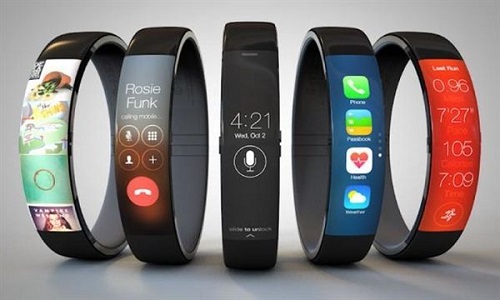Speculations about the iWatch have been floating around the internet, with every analyst giving their take of what technology they think Apple will use. After reading through hundreds of articles posted by U.S. media discussing new Apple patents and technology acquisitions, Tencent has compiled a list of the top five plausible technology and materials that might be seen in the iWatch.
Sapphire substrate material
GT Advanced Technologies signed a multi-year supply agreement late last year with Apple for US $578 million to provide sapphire material. This agreement will also most likely provide sapphire material for use in future iOS device displays and components.
Sapphire material is almost certain to replace Gorilla Glass in future iPhone and iPad models. Another possible application is for use in devices with smaller displays, such as the iWatch. Sapphire substrate will also likely to replace the current material in iOS camera lens and Touch ID.
If Apple does decide to use sapphire material in future products, iWatch will most certainly be one of them. Most high-end watch manufacturers use sapphire material in their watches since it is scratch resistant.
LiquidMetal
LiquidMetal Technology entered into a licensing agreement with Apple in 2010 for US $20 million for use of the company’s LiquidMetal material. At the same time, Apple applied for and was granted a series of LiquidMetal related patents.
LiquidMetal is an amorphous alloy and is thinner, harder, and more flexible than traditionally alloys used in electronic devices. LiquidMetal is also scratch resistant. However, this material is not easy to produce on a large scale. Apple therefore has only used this material once to make a SIM card ejector tool in their iPhone 3G. The material still requires an additional 2 to 4 years of research until it is ready for mass production.
It is worth noting that Apple has already secured the exclusive rights for this material.
OLED Technology
Organic Light-Emitting Diode, or OLED for short, is a self-illuminating light source that is composed of a layer of organic material situated between two electrodes. OLED displays have a wider angle of visibility and use less power than other light sources. The application of OLED material can make a devise thinner and lighter, also well as curved.
Apple has already applied for a series of LED technology related patents. The company has also attracted a senior OLED researcher away from LG Display.
Application of OLED would allow the iWatch to perfectly fit the user’s wrist. Apple’s management team are not the biggest fans of OLED however. Earlier this year, Apple’s CEO Tim Cook was quoted as saying that Apple’s Retina Displays are twice as bright as OLED displays. Some mobile device manufacturers are already using OLED displays, but the color saturation is not up to par. “If you ever buy anything online and really want to know what the color is, as many people do, you should really think twice before you depend on the color from an OLED display,” Cook said in a CNet article.
Micro LED
Earlier this month, Apple acquired LuxVue Technology, a startup company that focuses on making low powered micro-LED based displays for the consumer market. Micro LED technology consumes less energy and is brighter. The incorporation of sapphire in display backlight could improve brightness significantly, while lowering energy consumption, according to Apple Patently.
Micro LEDs have become a direct competitor with OLED technologies as the two share similar advantages.
This technology is still in the initial stages, and has not yet found the correct method to enter the consumer market. However, Apple investment in LuxVue clearly shows the future application potential of micro LED technology, especially in light of the patent LuxVue holds for curved micro LED displays which would be ideal for application in iWatch.
Semiconductor
Apple has invested in a few semiconductor manufacturers over the past few years. In 2008, the company acquired California based fabless semiconductor company P.A. Semi for US $278 million. Two years later, Apple purchased another semiconductor manufacturer, CPU distributor Intrinsity. Intrinsity had previously worked with Samsung launching the dual-core ARM Cortex-A9 CPU. Apple then bought communication chip developer Passif Semiconductor in August and Israeli-based 3D sensor technology manufacturer PrimeSense in November last year.
In total, Apple has invested a whopping US $1 billion in semiconductor technology. It is very likely therefore, that iWatch products will include energy saving processor chip modules such as integrated baseband chip, CPU, and wireless network controllers.












